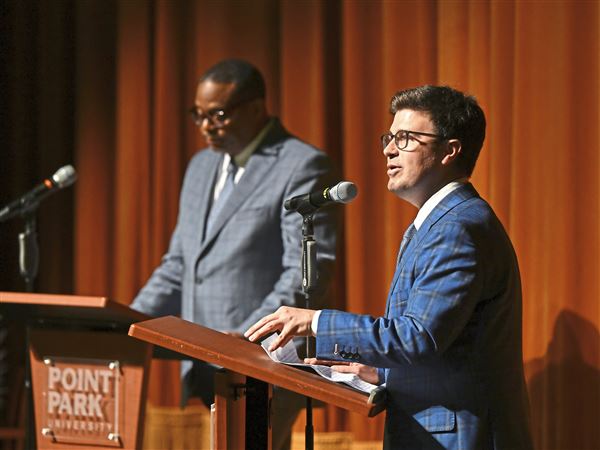Q. I planted a row of hemlocks (Tsuga canadensis) about five years ago. The trees seemed to grow well until late last summer. What is wrong with them?
A. A very common problem we see in landscape trees is that they have been planted too deeply. Tree roots require air and moisture in balance; planting too deeply denies the roots sufficient air and can cause them to rot by holding too much moisture. This is often made worse by mulching too deeply and by mulching right up around the tree's trunk. Trees planted and mulched too deeply fail to establish well, and they usually die. Even those that do not die never perform as well as ones planted properly. The damage shows up as reduced growth and/or dieback in the crown of the tree. By the time you see symptoms of decline, it may be too late to save the tree.
Sometimes, the problem originates at the nursery where the tree was grown. It is common practice for nurseries to cultivate for weed control between nursery stock rows. Cultivation throws excess soil over the trees' rootballs, and it is generally not removed before they are balled and burlapped for sale. When a buyer plants them properly, they may be 4 to 6 inches too deep already.
That was the case with these hemlocks. The caller had planted and mulched them properly, but I removed about 4 inches of nursery soil from the top of the rootball before I could expose the root flares. The root flare is the area where the trunk flares out into the roots. This is very evident on mature trees but is also visible on young trees. The root flare should always be visible. If not, the tree has been planted (or mulched) too deeply.
In excavating the root flares, I encountered some feeder roots that grew right out of the trunk at the soil level. Trees that are planted too deeply often try to grow a secondary, or adventitious, root system to try to survive. These secondary root systems are not extensive enough to support the tree, and they cannot replace the original root system.
I recommended that the caller expose the root flares of all the remaining trees and remove that much soil from the entire top of the rootball. I also recommended that he have the soil tested and fertilize according to the test results with a slow-release, organic-based fertilizer. In addition, the hemlocks will have to be watered if we get into hot, dry weather over the summer to protect them from stress.
I cannot guarantee that these trees will survive after having been planted too deeply for so long. One is dying, but the others are putting on new growth and may be able to recover.
In the past, when nursery stock was dug by hand, the grower would have removed the excess soil. Now that trees are dug mechanically, that is less likely to happen. It is a fact of life that home gardeners and green industry professionals must add to their to-do list when transplanting balled and burlapped nursery stock.
The best practice for planting B & B trees starts with carefully selecting a good tree at the nursery. There should be 1 foot of rootball for every inch of trunk diameter. Rock the tree gently by the trunk; it should feel solid in the rootball. The tree should be well branched, with a form appropriate for the species. Carry the tree by picking up the rootball, never by the trunk.
Once you get it home and are ready to plant, untie the burlap and look for the root flare. If you can't see it, use the curved section of a wire coat hanger to gently scrape the excess soil from the top of the rootball. Excavate gently and do not damage the bark.
Prepare a planting hole two to three times the diameter of the rootball but no deeper than the root flare. Use a yardstick or measuring tape if necessary. Avoid digging too deeply, so that the rootball sits on solid ground. Loosen up the sides of the planting hole with your spade to give the tree's roots an entrance to penetrate the clay soil surrounding the hole.
Never use any type of fertilizer in the planting hole, as it can burn tender new roots. You can water with a starter fertilizer once you finish planting, according to label directions. Gently place the rootball in the hole and orient the tree the way you want it to face. Remove the burlap as much as possible without damaging the rootball. It is all right for the rootball to sit on a piece of burlap as long it is has been removed from the top and sides. Cut the burlap away rather than shoving it into the planting hole. If your tree has a wire cage, cut it away from the top and sides of the rootball. Otherwise, it can girdle roots as they grow through the spaces.
Backfill with the soil you removed from the planting hole. The current recommendation is that you should not amend the backfill soil with organic matter for fear of creating a "bathtub effect." The thought is that organic matter acts like a sponge and holds too much moisture around the roots in our clay soils. Trees can decline and die from root rot. Also, they tend to concentrate their roots in the amended area and do not root out into the surrounding soil.
Backfill the hole halfway, then water to settle the soil. Finish backfilling and water again. Mulch your tree with 2 or 3 inches of organic material such as wood chips or shredded bark. Wood-based products last longer and keep the soil more porous than compost or mushroom manure. Mulching helps maintain soil moisture, moderate soil temperature and keep weeds down. Ideally, the mulch should not come into contact with the trunk. Start a couple of inches away from the trunk and extend the mulch out to the ends of the branches (the drip line) if possible.
Tree roots grow stronger and faster under mulch than under turfgrass. It is best to remove grass from under the tree out to the drip line and replace with mulch to minimize competition for water and nutrients.
First Published: May 15, 2004, 4:00 a.m.













